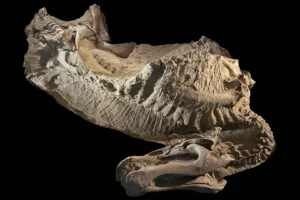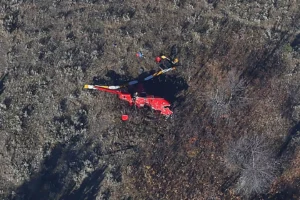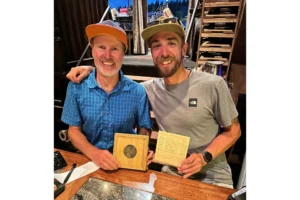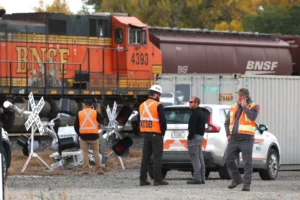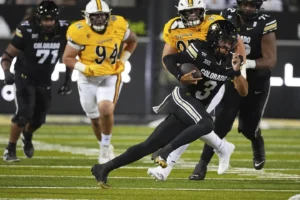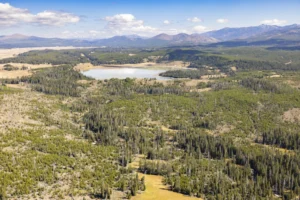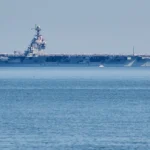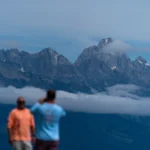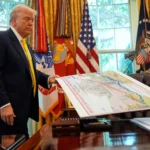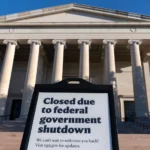FRIDAY FOCUS: How the Wyoming State Geological Survey Helps Residents
State geologist Erin Campbell oversees projects related to resources, development and hazards
- Published In: Other News & Features
- Last Updated: Apr 21, 2023
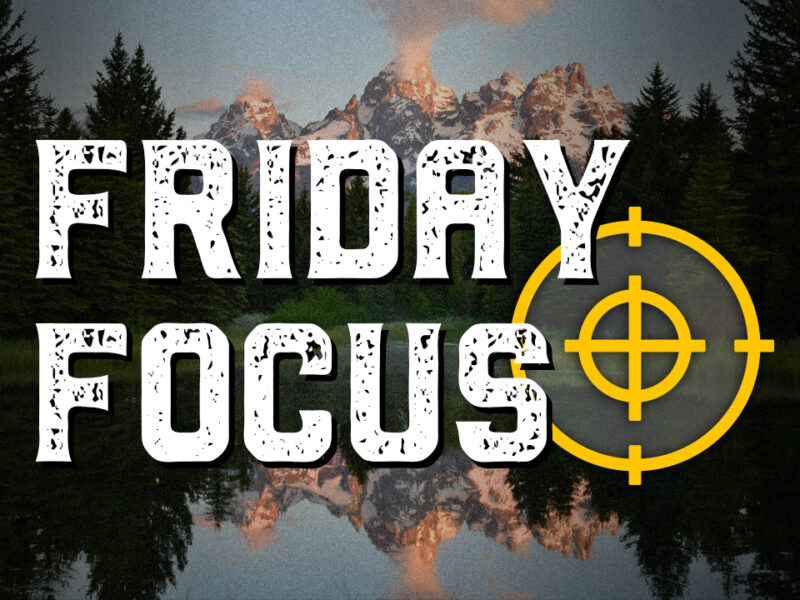
By Sarah Scoles
Special to the Wyoming Truth
The Wyoming State Geological Survey’s slogan is “Interpreting the past, providing for the future.” Simply put, it means understanding earth’s features and processes, which existed long before humans showed up, and analyzing how the knowledge can be applied to our modern lives.
Whether the Geological Survey is researching Wyoming’s earthquake hazards, oil resources or rare-earth mineral caches, Erin Campbell, the organization’s director and state geologist, oversees it all.

Campbell, 53, majored in geology and minored in math at Occidental College in Los Angeles before making her way to Wyoming for a Ph.D. in geology. After graduate school, Campbell worked as a geologist for Chevron in Louisiana and California, before taking a position at UW, where she conducted research, taught courses and directed the Geology Field Camp. She started with the survey in 2016, was appointed by Gov. Matthew Mead as state geologist in 2017 and was reappointed in 2019 when Gov. Mark Gordon took office.
The Wyoming Truth recently spoke to Campbell about the Geological Survey’s current projects and how they apply to everything from mining to real estate. What follows are excerpts from the interview.
Your career has been quite a journey on this planet that you study. It sounds fun.
Campbell: It’s been so much fun, and it still is fun. I truly think I have one of the best jobs in the world, and I’m grateful that Gov. Gordon decided to keep me on.
What does a state geologist do all day?
Campbell: The state geologist wears a lot of different hats. In this position, I direct the Geologic Survey and serve on the governor’s cabinet, so I’m consulted by the governor’s office on a number of geologic matters, like oil and gas, mineral resources, groundwater or geologic hazards.
Additionally, there are required board positions, so I serve on the Wyoming Oil and Gas Conservation Commission, the Enhanced Oil Recovery Institute Commission, the State Groundwater Committee, the Professional Geology Licensing Board and the Yellowstone Volcano Observatory, among others.
But really the number-one thing is making sure that my staff at the survey have the resources they need to do the projects that best benefit the people of Wyoming.
What are what are some of those projects at the moment?
Campbell: There’s a big push for domestic critical mineral development, for national security issues or development of renewable resources and things like that. Wyoming hasn’t had any big mineral discoveries like our neighbors, but we do have potential.
We’re doing a project on heavy mineral sands, which are the world’s primary source for titanium and zirconium and which form from ancient shorelines. When the waves washed in, they dropped those heavy minerals. We’re looking at ancient shorelines and finding areas where there have been concentrations of those minerals.
Then there are a number of projects that we’ve done in collaboration [with] or funded by the USGS Earth Mapping Resources Initiative—or Earth MRI. We just completed a very rigorous study in the Central Laramie Range. We have a project that starts this summer working in the Medicine Bow Mountains, where we’re collecting samples to run geochemistry and geochronology, which gives you the age of the rocks.
Another MRI project involves airborne geophysical studies over the Medicine Bow Mountains and the Sierra Madre Mountains. We’ll be able to see through the trees and thinner sediments on the surface and see where the rocks trend more magnetic or have a radioactive signal. If we see a high concentration of critical minerals in an area that’s along that trend, we can collect more samples and outline where that ore could be further explored.

With money from the state, we also contacted mining-industry people and asked them where they would like to see such an airborne geophysical survey. The greatest area of interest was South Pass and the Granite Mountains. The data will come from the South Pass-Atlantic region, the Rattlesnake Hills, the Granite Mountains and a little bit of the Seminoe Mountains. It’s exciting, because that has historically been a successful area for mining.
What about the Geological Survey’s work making maps?
Campbell: Geologic maps are the foundation for everything in Wyoming, whether it’s real estate development, mining, oil and gas or hazards work on landslides and earthquakes. Having a geologic map is an important first step for anything that comes after it.
You would think that the state has been mapped by now. It has not. We do have a geologic map that is generalized in a lot of areas, and some places require a lot more detail. So we’re slowly trying to cover the state. I think we’ve got about half of what we’d like to do done.
People who don’t work with maps may not consider how their data is necessary for so many different industrial, commercial or environmental projects.
Campbell: There was recently a national study on how geologic maps are used, and the number one use is real estate and development.
We recently put out what we call our basement map. And it’s not like a basement in a house, but it’s a map of the depth to our oldest granitic and metamorphic rocks—the rocks that everything else is deposited on. It’s useful for oil and gas, and for things like carbon sequestration. You need to know the depth to the basement to drill the wells to inject the carbon dioxide.
How else is your map data used?
Campbell: We have a landslide susceptibility map. We also get consulted on groundwater issues. We have a number of online maps, like geologic hazards, oil and gas, geology of Yellowstone, mines and minerals and geothermal activity that are linked to the actual data.
Is there something you wish people knew about the Geological Survey?
Campbell: I think the people who know what we do love our work. I just wish more people were aware that the survey is here. We have such an amazing amount of data. We have brilliant staff who work really hard and are creating products that are of use to the state. But it’s hard to get the word out about what we do.

